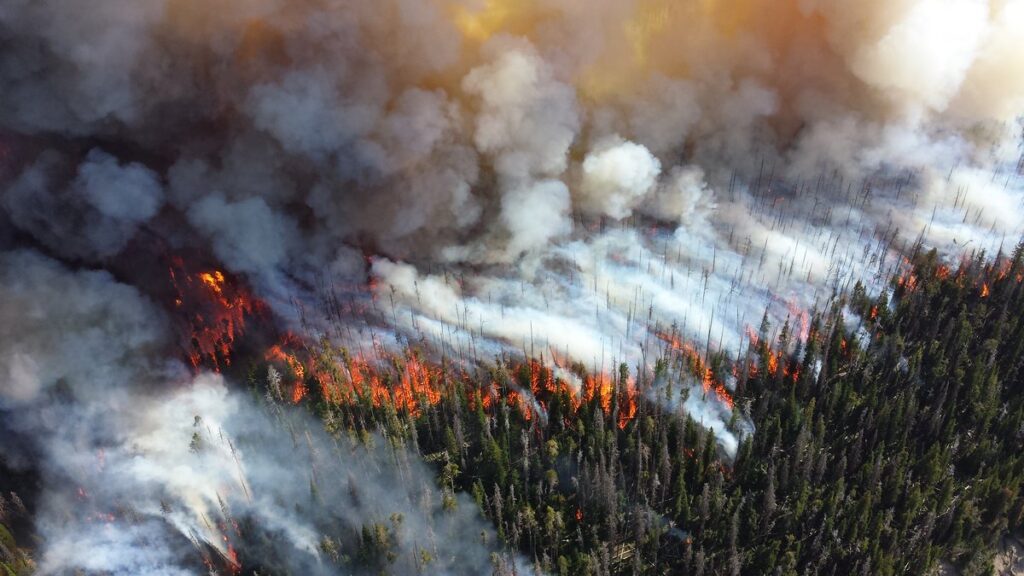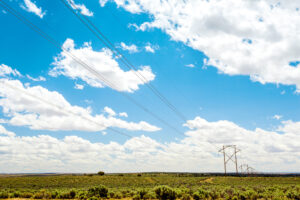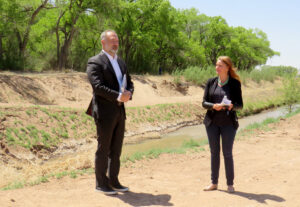High-elevation forests now burning more frequently than any time in the past 2,000 years

As climate change drives up temperatures and creates longer, more expansive droughts, the typically cool, moist high-elevation forests of the central Rockies are burning with greater frequency than any time in the past 2,000 years, according to a study in the upcoming issue of the Proceedings of the National Academy of Sciences.
Lead author Philip Higuera, a fire ecologist at the University of Montana, examined paleofire records — data from tree rings and lake sediment — across a broad swath of the central Rockies of Colorado and Wyoming to understand how frequently subalpine forests burned over the past two millennia.
During that period, the average fire rotation period was 230 years, meaning a high-elevation forest composed of subalpine fir, Engelmann spruce or lodgepole pine would burn about once every 2.5 centuries. Largely due to the 2020 fire season, which was remarkable for both its duration and the expanse of the area burned, that interval has been cut nearly in half in the 21st century. We’re now looking at subalpine forests in the central Rockies burning every 117 years.
Higuera said the compression of the time between wildfire events in subalpine forests is something the research community has been predicting for decades, but they didn’t expect to see such pronounced changes so quickly.
“It was a little surprising that it was by 2020 and not by 2030 or 2050,” he said.
The research describes high-elevation forests like the ones Higueara studied as being “useful sentinels of climate change impacts” because the typically cool, moist conditions they grow in have historically limited fire frequency and because they’ve generally experienced less land-use change and fire suppression than lower-elevation forests. But as rising temperatures dry out those forests, they’ve become more flammable. Study authors say planning across all scales — from individuals to utility companies, municipalities to the federal government — “can no longer be reasonably based on expectations of the past.”
The research also highlights the shrinking gap between extreme fire years. At the start of the 21st century, there was a 10-year interval between extreme fire years, but the past six years the central Rockies have seen high-intensity fire years every-other year.
Temperature-spurred droughts are notable not only for their impact on forest flammability but also for how they can inhibit forest regeneration following a wildfire.
“The combination of increased burning and more stressful postfire climate conditions for tree regeneration in upcoming decades foreshadows the potential for widespread loss of subalpine forest resilience to wildfire,” the study says.
Higuera said he’s at work on another study that will use a similar process to look at how subalpine forests in the Northern Rockies are responding to climate change. He’s also interested in learning more about how new fire regimes will shape ecosystems in the future.
Many ecosystems are fire-adapted, meaning fire plays an important role in the healthy functioning of that ecosystem by clearing out accumulated fuels, helping trees replace themselves, or providing habitat for animals, for example. But in other landscapes, fire has a more destabilizing influence. If a wildfire burns too hot or too frequently on those landscapes, the flora and fauna might not come back the way they were before.
Between the two, there’s a middle ground where land managers will have an opportunity to direct a response after a wildfire, Higuera said. In those areas, land managers have a critical post-wildfire window where they can support forest resilience by leading a tree-replanting effort, for example.
“Being able to distinguish between those three scenarios is important for how land managers respond,” Higuera said.
This article was originally posted on High-elevation forests now burning more frequently than any time in the past 2,000 years







